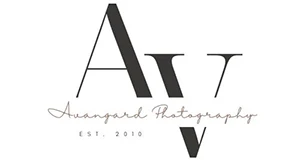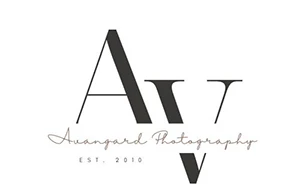So what is Wedding Photojournalism?
Hello everyone. Today we have a treat for all of us wedding photojournalists. We’ve known and followed Mel DiGiacomo for many years, as he is one of the greatest sport and wedding documentary photographers ever. In today’s video Mel is discussing his photojournalistic approach to shooting weddings. Thanks B&H for this amazing interview.
Hi my name is Mel DiGiacomo and I’m photojournalist, sports photographer, landscape photographer and wedding photographer. The title doesn’t matter as long as the subject attracts me.
What I want out of a wedding is real life.
I want some kind of truth; whether it’s my truth or their truth. And don’t ask me to describe what truth is but that’s what I want out of a wedding.
So you want to be a wedding photographer – go ahead but break some rules. I have absolutely no idea what I’m going to see or what I’m going to find, but this is where your training as a photojournalist comes in. You’re always ready, you know what your exposures are, you know what lenses you should be using, and you know how close or how far you should be.
When I’m shooting a wedding I like to walk around and find moments. I basically do the same thing at any wedding – I just walk around and I find moments. You have to choose the moments and you have to anticipate some of those things.
I think the difference between the people that do wedding photographs and what I do is I’m the only photographer at the wedding. I don’t use an assistant, I don’t have any lights outside of a pop flash on my Canon 20d, and I try and get in the middle of everything with wide-angle lenses.
This is a Canon 24 1.4 lens. I like it a lot. It’s a great lens and the one thing about the 24 millimeter is that it demands that you get close. I mean you can’t stand back and then shoot with that. Yeah well if you want to stand back and then crop the hell out of everything that’s one thing but that’s not what I do.
I like to get close and I do that for two reasons. I really like to be around people and the other thing is that you’re right here with me. It is just as if you’ve got your arm inside my arm and I’m taking you along and you’re participating in this wedding.
You’re looking at that photograph that I produced and there’s a very physical nature to it. That’s the way you get close, by putting on the wide-angle lens. You don’t put on an 80 to 200 zoom and stand 15 feet away and get close like that. When you use zoom to get close everything gets flat.
As a wedding photojournalist and using a wide angle lens, there’s this dimension to it and I’m bringing you in – the viewer standing right next to me into the scene. You’re going to see and experience what I saw at the wedding, as it happened, thanks to the three dimensional quality of photos that only wide-angle lens offer.
Ernst Oz said the best lens you have are your feet – you want a wide-angle back up one inch, you want telephoto move in. That’s what the wide-angle does. You have to be close with that one. And when you are close, it makes the pictures more physical. It commands the viewer to join in and participate.
Somebody’s going to be looking at my wedding pictures and I want them to be engaged in these photographs. The only way to do that is with the wide-angle lens.
The other thing is people know you’re there. I mean I know I can’t be missed. I’m there three or four feet away but they learn to ignore me – you know, when they’re dancing and I’m in the middle of the dance floor. But yet at the same time they’re still aware of me being there and it doesn’t distract them being photographed at all.
I mean sometimes you get some people doing silly poses up close and that works very nicely because it’s spontaneous; it’s not something I posed. I don’t want to pose any of the photographs at weddings.
I just want to be a witness.
A bride told me once she said my wedding was a blur and I never saw it, but you were my witness, you showed me my wedding. And I did that up close and not from a distance but up close. I brought her into her wedding pictures. So that’s probably the best compliment I’ve ever gotten.
The other thing I’ve gotten away from, thanks to today’s technology, is that I don’t use flash that much. It depends upon the wedding venue, but if it’s well lit I won’t use flash at all. The thing I like about my Canon 5d Mark 3 is that the ISO can go way up go up to 25,000. And what that means that I can use this 24 1.4 lens at 25,000 ISO, and go into a closet and photograph moths if that’s your idea of a good time.
I shoot in color but I don’t process it in color. I process what I observe in black and white. The reason I do it that way is because every once in a while and it doesn’t happen very often but maybe once every five or six seven weddings, there is this one moment that is absolutely glorious in color. But if you want to document real emotions you do in black and white.
I’m going along with what Robert Frank aa great photographer once said. The colors of photography are black and white, but it’s more difficult to process a scene in mono tones. That’s of one the reasons why a lot of wedding photographers don’t shoot in black and white, because it’s easier to shoot in colors.
When photographing a subject – the subject is the color. Here the red is the subject and that’s the first thing people are going to notice, is the color and I’m secondary. In black and white photography I eliminate the color then I become primary. That’s what it’s all about. It’s about the individual not the colors.
Don’t be afraid to try new things. You know don’t get stuck in the same old rut and saying oh well you know I’m used to shooting at 400. And I don’t want to shoot anything else. Nonsense go to 800 go to 1200 the other 1600 go wherever it works.
Your job is to deliver amazing wedding pictures. Your responsibility is to yourself and then to the client. I always put myself before the client because I want the best and only the best for myself and that’s why the client hires me.
It’s because they like what I do and again I’m going to take chances. I’m going to shoot from angles that most people don’t shoot from. You have to move around, you want to get real low and shoot up and get high and shoot down.
Go ahead and break few rules. You know there are no formulas in life so why should to be a formula the wedding photography, especially documentary wedding photography.
There’s nothing like being a photographer. There’s all kinds of pain all kinds of suffering and all kinds of wonderful joy, so take the good with the bad. It’s all about emotions and how your photographs make other feel.
Remember what Samuel Beckett said, never tried, ever failed, no matter try again, fail again, fail better. So keep doing what you are doing. You’re going to fail – there’s no question about it. But failures are the portals to success, you learn from them.
Don’t gets discouraged – we all make mistakes, so learn from your mistakes and keep making them? You’ll only get better and better and better so you’ll make fewer of fewer and fewer mistakes.
Thanks to B&H
Wedding photojournalism tips Mel DiGiacomo on Photojournalist Approach to Weddings








